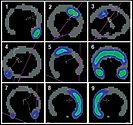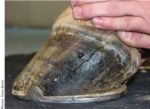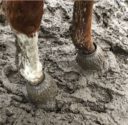Advertise Follow Us
Therapeutic Shoeing
Ghent University researcher’s findings can influence trimming and shoeing for individual hoof-care cases
Read More
Strategies for Troubleshooting Soft Tissue Injuries in the Western Performance Horse
Thorough lameness evaluations and thoughtful shoeing prescriptions play a key role in helping horses recover from soft tissue injuries
Read More
Research Journal: May/June 2020
The information, ideas and opinions expressed are those of the author and do not necessarily represent those of the United States Department of Agriculture.
Read More
Through surveying three cases, Dr. Scott Morrison discusses his approach and shares footcare tips
Veterinarian and farrier Scott Morrison of Rood and Riddle Equine Hospital gives tips with challenging cases
Read More
Patching Hoof Wall Cracks with Composite Materials
Research puts hoof crack composites to the test
Read More
Therapeutic Farrier Achieves Hoof-Care Goals Using Pads and Pour-ins
Products can provide frog support, cushion the sole and reduce concussion
Read More
Hoof Moisture Content Plays a Major Role in Foot Quality
Shorter trimming intervals, moisture barriers and proper supplementation can aid farriers in regulating hoof moisture
Read More












